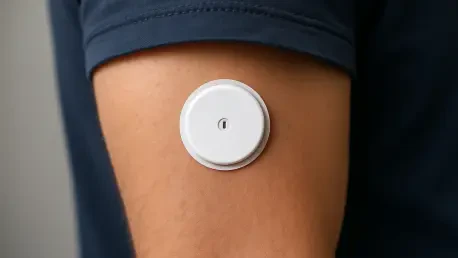I’m thrilled to sit down with Ivan Kairatov, a renowned biopharma expert whose extensive experience in research, development, and innovation has made significant contributions to the intersection of technology and healthcare. Today, we’ll dive into his insights on continuous glucose monitors (CGMs), particularly focusing on a recent study that explored their effectiveness across different populations. Our conversation will cover the purpose and design of CGMs, the diverse groups studied, the varying reliability of CGM data compared to traditional blood sugar tests, and what this means for individuals with and without diabetes. Join us as we unpack the nuances of this cutting-edge technology and its implications for health management.
Can you start by explaining what continuous glucose monitors, or CGMs, are and how they’re typically used in healthcare?
Absolutely, I’m happy to break it down. Continuous glucose monitors are wearable devices that track blood sugar levels in real time, providing a constant stream of data about glucose fluctuations. They’re small, often worn on the arm or abdomen, and measure glucose in the interstitial fluid every few minutes. Typically, they’re used by individuals with diabetes, especially type 1 and type 2, to help manage their condition. CGMs allow users to see how their blood sugar responds to food, exercise, stress, or medication, and they can alert them to dangerous highs or lows. This technology has been a game-changer for diabetes management, reducing the need for frequent fingerstick tests and offering a more dynamic picture of glucose control.
Who were CGMs originally designed for, and how do they specifically benefit this group?
CGMs were primarily developed for people with diabetes, particularly those who struggle with maintaining stable blood sugar levels. For this group, the devices are invaluable because they provide immediate feedback and help prevent complications like hypoglycemia or hyperglycemia. They allow patients to make quick adjustments to insulin doses or lifestyle choices based on real-time data. Beyond that, CGMs integrate with other tools like insulin pumps for automated delivery in some cases, which can significantly improve quality of life and long-term health outcomes for those managing diabetes.
Your recent study analyzed CGM data across a wide range of individuals. Can you walk us through who participated in this research?
Of course. Our study included 972 adults aged 40 and older, which gave us a robust sample to work with. We categorized participants into three groups based on their glycemic status: those with type 2 diabetes, those with prediabetes, and individuals with normal blood sugar levels. These participants were enrolled through a federally funded program focused on advancing health equity and research diversity, and they came from various locations across the United States, including sites in Alabama, California, and Washington. They wore a specific CGM device that recorded their blood sugar every five minutes for up to 10 days, allowing us to gather detailed data on glucose patterns.
What were the key findings when you compared CGM data to the standard blood sugar test, hemoglobin A1c, across these different groups?
The findings were quite telling. For individuals with type 2 diabetes, we saw a strong correlation between CGM metrics, especially average glucose levels, and hemoglobin A1c, which is the gold-standard test for assessing long-term blood sugar control over several months. However, this relationship started to weaken in the prediabetes group, where the alignment between CGM data and HbA1c wasn’t as tight. Most strikingly, for those with normal blood sugar, there was virtually no connection between CGM metrics and HbA1c. Even when we adjusted for factors like body mass index, these patterns held, suggesting that CGM data doesn’t reflect long-term glucose control in non-diabetic individuals the way it does for those with diabetes.
Why do you think CGM data is so much more reliable for people with diabetes compared to those without?
That’s a great question, and it largely comes down to the original purpose and design of CGMs. These devices were engineered specifically for diabetes management, where blood sugar levels often fluctuate significantly and need close monitoring. The algorithms and metrics are tailored to capture and interpret those variations in a way that aligns with clinical markers like HbA1c for this population. In people without diabetes, blood sugar changes tend to be more short-lived—think spikes after a meal or dips during exercise—that don’t persist long enough to impact HbA1c. So, while CGMs can still pick up those fluctuations, they don’t necessarily translate to the same long-term insights for non-diabetic individuals.
For people without diabetes, what are the implications of relying on CGM data for health decisions?
For those without diabetes, it’s important to approach CGM data with caution. The numbers can be interesting and even motivating, but they shouldn’t be treated as a direct measure of overall blood sugar control the way HbA1c is. There’s a risk of misinterpreting short-term fluctuations as something more significant than they are, which could lead to unnecessary worry or even inappropriate lifestyle or medical decisions. Without the context of diabetes, CGM data lacks the same clinical relevance, so it’s critical for individuals and their healthcare providers to avoid over-relying on it as a diagnostic tool.
Even with these limitations, you’ve suggested that CGMs might still have value as a feedback tool for people without diabetes. Can you elaborate on that?
Absolutely. While CGMs don’t correlate with long-term blood sugar markers in non-diabetic individuals, they can still serve as a powerful biofeedback tool. They offer real-time insights into how specific foods, physical activity, or even stress impact blood sugar levels. For example, someone might notice a sharp spike after eating a sugary snack and use that information to make healthier choices. Or they might see how a workout helps stabilize their glucose. This kind of immediate feedback can foster greater awareness and encourage positive behavioral changes, even if the data isn’t a direct indicator of long-term health risks.
What is your forecast for the future of CGM technology, especially regarding its use in broader populations beyond diabetes?
I’m optimistic about the potential of CGM technology, but I think its expansion into broader populations will require significant advancements in how we interpret the data. We’ll likely see more research focused on identifying specific CGM patterns or metrics that could predict early risks for conditions like prediabetes in otherwise healthy individuals. There’s also a push toward integrating CGMs with other health technologies and personalizing the insights they provide. However, ensuring equitable access to these tools and educating both users and clinicians on their appropriate use will be crucial. I believe the next decade will bring more clarity on how CGMs can benefit non-diabetic populations, but it will take careful study and innovation to get there.









